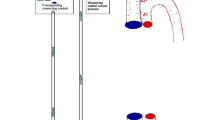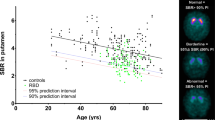Abstract
KNOWLEDGE of the role of free amino-acids in the activity of the central nervous system (CNS) and in the basic neural processes of excitation and inhibition has accumulated over a number of years. The pool of free amino-acids in the brain is the source from which amino-acids liberated by the breakdown of proteins are returned1. The brain has the highest concentration of glutamic acid, gamma-aminobutyric acid (GABA) and aspartic acid, and these compounds do not occur to any significant extent in the other tissues of mammals. GABA especially occurs only in the CNS of mammalian organisms, and it has been shown that this substance has characteristic physiological effects on the CNS (ref. 2). In nervous tissue, as in other organs, the carbon skeleton of non-essential amino-acids is derived ultimately from glucose by way of the citric acid cycle. Active brain transaminases catalyse the reversible amination and deamination of essential and non-essential amino-acids.3.
This is a preview of subscription content, access via your institution
Access options
Subscribe to this journal
Receive 51 print issues and online access
$199.00 per year
only $3.90 per issue
Buy this article
- Purchase on Springer Link
- Instant access to full article PDF
Prices may be subject to local taxes which are calculated during checkout
Similar content being viewed by others
References
Waelsch, H., in Neurochemistry (edit. by Elliot, K. A. C.), 288 (Charles C. Thomas, Springfield, 1962).
Roberts, E., and Eidelberg, E., in Intern. Rev. Neurobiol., 2, 279 (1961).
Awapara, J., and Seale, B., J. Biol. Chem., 194, 497 (1952).
Jouvet, M., Prog. Brain Res., 18, 20 (1965).
KaradŽić, V., Acta Med. Yugoslav., 3, 282 (1966).
Jouvet, D., Vimont, P., Delorme, J. F., and Jouvet, M., C.R. Soc. Biol., Paris, 158, 756 (1964).
Kramer, F., Papierchromatographie, 5, 89 (Verlag Chemie, 1962).
Rakič, LJ. M., Israel J. Med. Sci., 1, 1376 (1965).
Preston, J. B., J. Pharmacol. and Exp. Therap., 115, 28 (1955).
Haslan, R. J., and Krebs, H. A., Biochem. J., 88, 566 (1963).
Geiger, A., in Neurochemistry (edit. by Elliot, K. A. C.), 128 (Charles C. Thomas, Springfield, 1962).
Author information
Authors and Affiliations
Rights and permissions
About this article
Cite this article
MIČIČ, D., KARADŽIĆ, V. & RAKIČ, L. Changes of Gamma-aminobutyric Acid, Glutamic Acid and Aspartic Acid in Various Brain Structures of Cats deprived of Paradoxical Sleep. Nature 215, 169–170 (1967). https://doi.org/10.1038/215169a0
Received:
Issue Date:
DOI: https://doi.org/10.1038/215169a0
This article is cited by
Comments
By submitting a comment you agree to abide by our Terms and Community Guidelines. If you find something abusive or that does not comply with our terms or guidelines please flag it as inappropriate.



